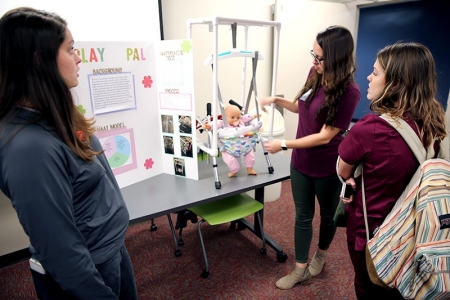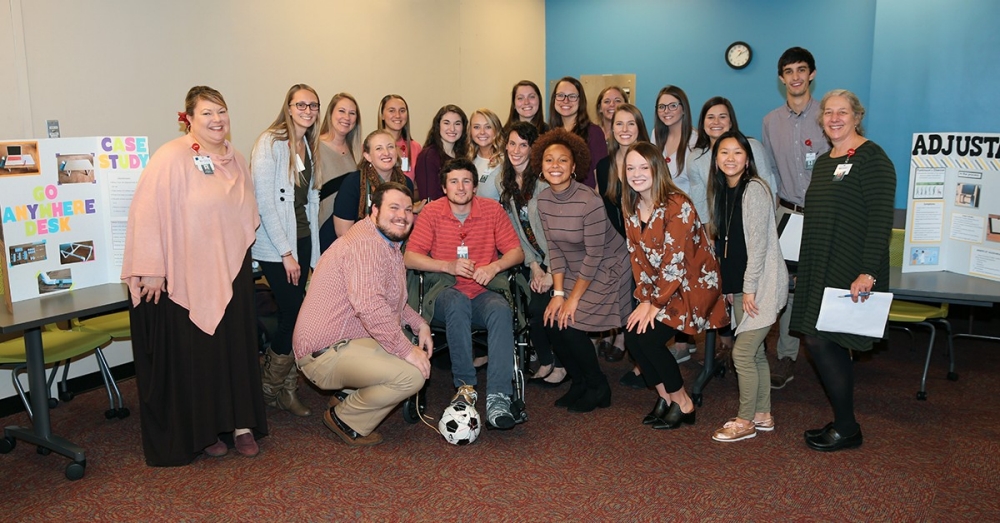Occupational Therapy Assistant students present assistive technology construction case studies

On December 3, students from the Occupational Therapy Assistant (OTA) program at Radford University Carilion (RUC) presented assistive technology devices created to help patients complete everyday tasks, or as they are called in the profession, “occupations.” This experience provided the second-year OTA students with a fun, yet meaningful, opportunity to apply their education concepts through a simulated challenge.
“The students are grouped in two- or three-person teams,” said Leah Savelyev, an assistant professor in the OTA program, who is charged with overseeing the presentations. “Then, each team gets a case study that provides details their patient and something important in the patient’s life that they still want or need to do. It is then up to the teams to create a device that can help that happen.”
The subjects of the case studies included patients recovering from illnesses and those with disabilities needing assistance to become more independent. Patients featured within case studies ranged from infants to the elderly.
Savelyev said that the teams are not given any additional guidance or tools to develop their devices. She said it is up to the students by working together and using problem-solving techniques to find a solution with existing items and knowledge gained throughout the program.
The devices on display included ones that help clients apply makeup, go fishing, turn deadbolts, play soccer, work on engines and even cook using an adaptive tray.
“This is fun, because it puts everything we’ve learned into a real perspective,” said OTA student Katie Baker. “We have to be creative and cost-efficient with these projects, while we have the chance to see what it will be like to work with real clients, facing real problems.”
This [case study presentation] is fun, because it puts everything we’ve learned into a real perspective. We have to be creative and cost-efficient with these projects, while we have the chance to see what it will be like to work with real clients, facing real problems.
The presentations are the culmination of the students’ on-campus studies in the program. During their final semester during the spring of 2020, students will be performing rotations in the field working with clients across the region.
“This kind of activity is important, because it’s what they will have to do every day as OTAs,” Savelyev said. “The next step for them is field rotations, and then they will graduate. Before they go out and work with people, we want to ensure they are thinking on their feet, using their creativity and demonstrating all of the great techniques they learn with us at RUC.”

Occupational Therapy Assistant students with assistant professor Leah Savelyev (left) at the case study presentations event on Dec. 3.